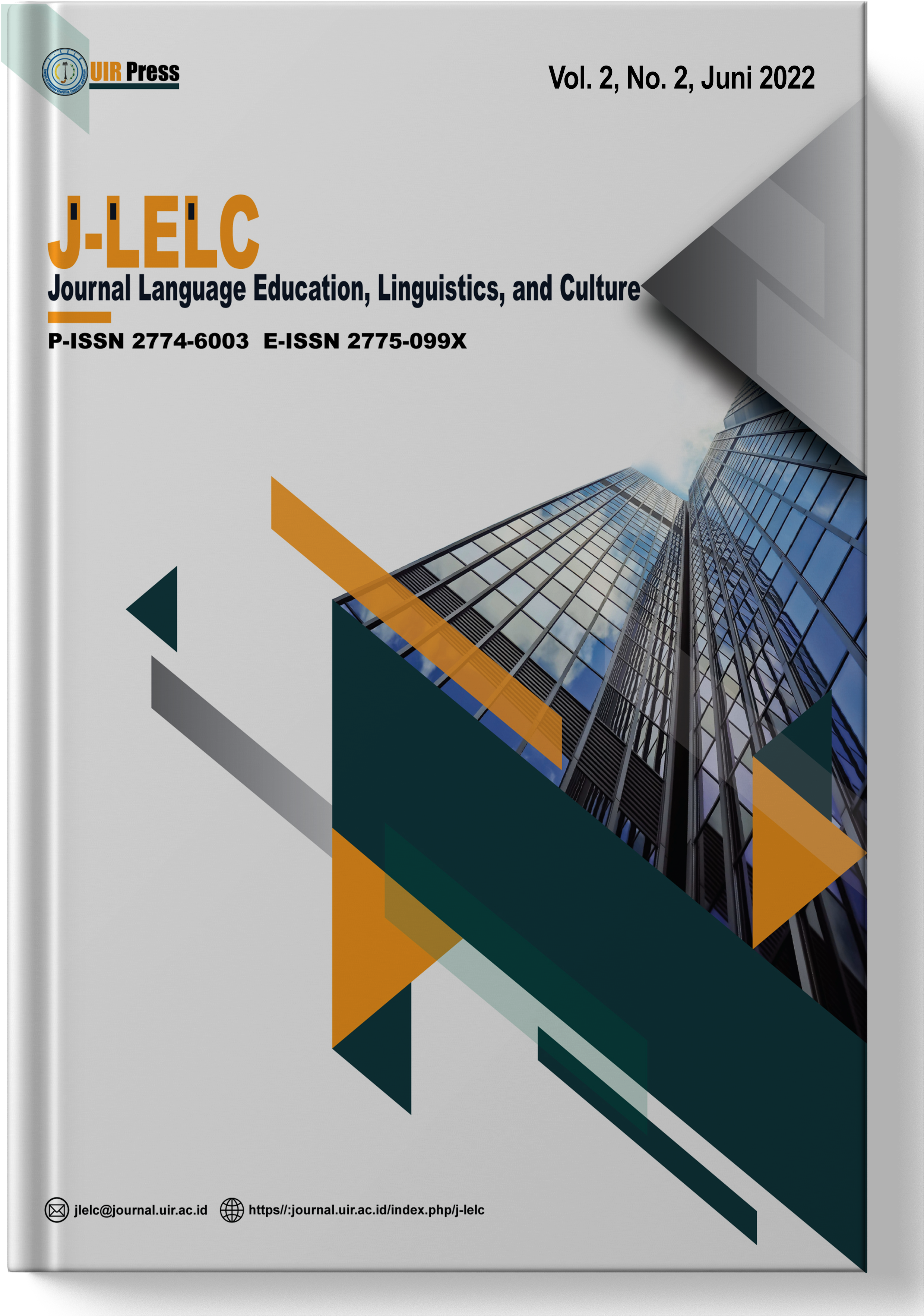Analisis Makna Konotatif Pada Kumpulan Lagu Album Daun Jatuh
DOI:
https://doi.org/10.25299/j-lelc.2022.9929Keywords:
Connotative Meaning, Daun Jatuh Album, Taste Value, SongAbstract
The background of This research because the assumption that connotative meaning is difficult to understand, but it is inversely proportional to the reality. This can be seen in the collection of songs in the album of fallen leaves which contain several connotative meanings, but the number of listeners can reach more than 29 million and is still growing. The purpose of this study was to analyze and explain the connotative meaning of positive and negative feelings in a collection of songs in the album of fallen leaves. This research uses the song lyrics contained in the album of fallen leaves as an object to get some data. The method used by the researcher is the Content Analysis Method. Based on the results of the research on the connotative meaning of the collection of fallen leaves album songs, several positive category and negative category connotative meanings were found. There are 5 positive connotative meanings and 3 negative connotative meanings. Based on this data, it can be concluded that the connotative meaning used by fallen leaves in each of the songs has positive and negative values.
Downloads
References
Asnawi, A. (2020). Kategori dan Fungsi Sosial Teks Cerita Rakyat Mayarakat Banjar Hulu: sebagai Pengukuh Warisan Kebudayaan Lokal Bangsa. Jurnal Sastra Indonesia, 9(3), 212–221.
Asnawi, A., & Muhammad, M. (2018). Verba Majemuk Bahasa Banjar Hulu: Tinjauan Bentuk Gramatikal. GERAM, 6(2), 10–26. https://doi.org/https://doi.org/10.25299/geram.2018.vol6(2).1971
Asnawi, A., & Mukhlis, M. (2018). Verba Majemuk Bahasa Banjar Hulu: Tinjauan Bentuk Gramatikal. GERAM, 6(2), 10–26.
Mukhlis, M., & Asnawi, A. (2019). Teks Anekdot dalam Cerita Lisan Yong Dollah Pewarisan Orang Melayu Sebagai Alternatif Pemilihan Bahan Ajar Bahasa Indonesia. Geram, 7(2), 30–43. https://doi.org/10.25299/geram.2019.vol7(2).3774
Zulfadhli, M., & Asnawi, A. (2015). Fungsi Asertif Repetisi Pada Kumpulan Puisi Perempuan Wali Kota Karya Suryatati A Manan. GERAM (Gerakan Aktif Menulis), 7(1), 1–10.
Cahyani, E., & Zalman, H. (2021). Analisis Makna Konotatif Lirik Lagu Dalam Album “Best Selection Blanc” Oleh Aimer. Omiyage: Jurnal Bahasa dan Pembelajaran Bahasa Jepang, 4(1), 1-14.
Chaer, Abdul. 2007. Linguistik Umum. Jakarta: Rineka Cipta.
Chaer, Abdul. 2013. Pengantar Semantik Bahasa Indonesia. Jakarta: Rineka Cipta.
Daun jatuh. 2022. Daun jatuh profile di open.spotify.com/artist/3EaScgA3zh2rORlbrAL8RI (diakses pada 23 April).
Dian, A. (2020). Makna Konotatif Lirik Lagu Dalam Album Anippusu Oleh Seven Oops: Tinjauan Semantik (Doctoral dissertation, Universitas Andalas).
Junaiyah, H & Arifin E. Zaenal. (2010). Keutuhan Wacana. Jakarta: Grasindo
Majid, Abdul. 2017. Analisis Data Penelitian Kualitatif. Makassar: Aksara Timur
Mamik. 2015. Metodologi Kualitatif. Sidoarjo: Zifatama Publisher
Moleong, Lexy J. 2006. Metodologi Penelitian Kualitatif. Bandung : PT Remaja Rosdakarya.
Muslich, Masnur. 2015. Fonologi Bahasa Indonesia: Tinjauan Deskriptif System Bunyi Bahasa Indonesia. Jakarta: Bumi Aksara.
RM, Yoyok & Siswandi. 2008. Pengantar Seni Budaya 2 SMP. Jakarta: PT Galhia Indonesia Printing
Sinaga, Y. C., Cyntia, S., Komariah, S., & Barus, F. L. (2021). Analisis Makna Denotasi Dan Konotasi Pada Lirik Lagu “Celengan Rindu” Karya Fiersa Besari. Metabasa: Jurnal Bahasa, Sastra, dan Pembelajaran, 3(1).
Syah, A. S. N. (2021). Analisis Makna Denotatif Dan Konotatif Dalam Lirik Lagu Insya Allah Karya Maher Zain. TEXTURA, 2(1), 29-38.
























